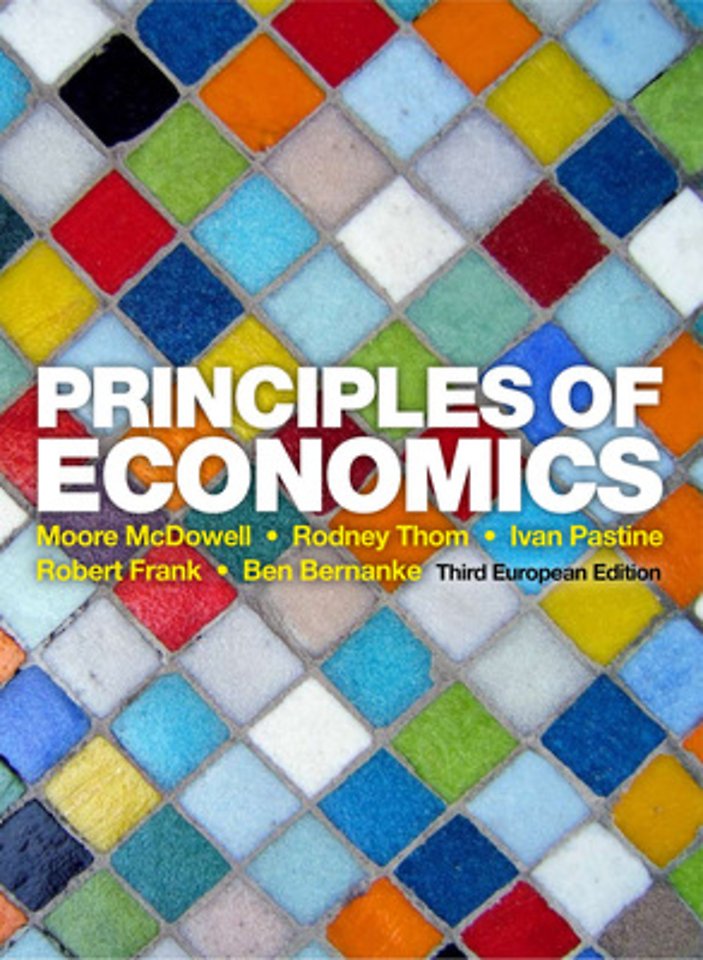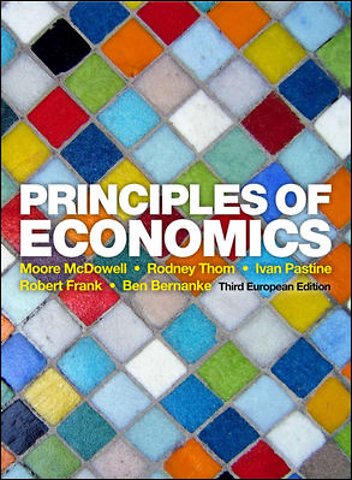Principles of Economics
Paperback Engels 2012 3e druk 9780077132736Samenvatting
With an accessible approach, the third European edition of Principles of Economics provides students with the tools to analyze current economic issues. The book is underpinned by a focus on seven Core Principles, which help students to make the link between economic theory and practice.
The 'economic naturalist' approach, supported by exercises, problems and examples, encourages students to employ economics principles to understand and explain the world around them.Developed from the well-regarded US textbook by Frank and Bernanke, it presents an intuitive approach to economics and is suitable for all students taking a Principles of Economics course.
Specificaties
Lezersrecensies
Inhoudsopgave
1. Thinking Like An Economist
2. Markets, Specialisation and Economic Efficiency
3. Markets, Supply, Demand and Elasticity
Part 2: Competition and the 'Invisible Hand'
4. Demand: The Benefit Side of the Market
5. Perfectly Competitive Supply: the Cost Side of the Market
6. Efficiency and Exchange
7. Profits, Entry and Exit: The Basis for the 'Invisible Hand'
Part 3: Market Imperfections 1: Market Power
8. Imperfect Competition and the Consequences of Market Power
9. Thinking Strategically 1: Interdependence, Decision Making and the Theory of Games
10. Thinking Strategically 2: Competition Among the Few
Part 4: Market Imperfections 2: Externalities, Information, Distribution and the Role of the Government in a Market Economy
11. Externalities and Property Rights
12. The Economics of Information
13. Labour Markets, Income Distribution, Wealth and Poverty
14. Government in the Market Economy: Public Sector Production and Regulation
15. The Credit Crunch and the Great Contraction: An Application of Some Micro-economics to Help Explain a Macro-economic Crisis
Part 5: Macroeconomics: Issues and Data
16. Macroeconomics: the Bird's Eye View of the Economy
17. Measuring Economic Activity: Gross Domestic Product
18. Measuring the Price Level and Inflation
19. The Labour Market: Wages and Unemployment
Part 6: The Economy in the Long Run
20. Economic Growth, Productivity and Living Standards
21. Capital Markets: Saving, Investment and Financial Intermediaries
Part 7: The Economy in the Short Run
22. Short-Term Economic Fluctuations
23. Money and Interest Rates
24. The IS-LM Model
25. Stabilising the Economy 1: the Role of Fiscal Policy
26. Stabilising the Economy 2: the Role of Monetary Policy
27. Aggregate Demand, Aggregate Supply and Inflation
28. The New Keynesian Phillips Curve: Expectations and Inflation Policy
Part 8: The International Economy
29. Exchange Rates, Capital Flows and the Balance of Payments
Vergelijkbare boeken
Anderen die dit boek kochten, kochten ook
Rubrieken
- advisering
- algemeen management
- coaching en trainen
- communicatie en media
- economie
- financieel management
- inkoop en logistiek
- internet en social media
- it-management / ict
- juridisch
- leiderschap
- marketing
- mens en maatschappij
- non-profit
- ondernemen
- organisatiekunde
- personal finance
- personeelsmanagement
- persoonlijke effectiviteit
- projectmanagement
- psychologie
- reclame en verkoop
- strategisch management
- verandermanagement
- werk en loopbaan














